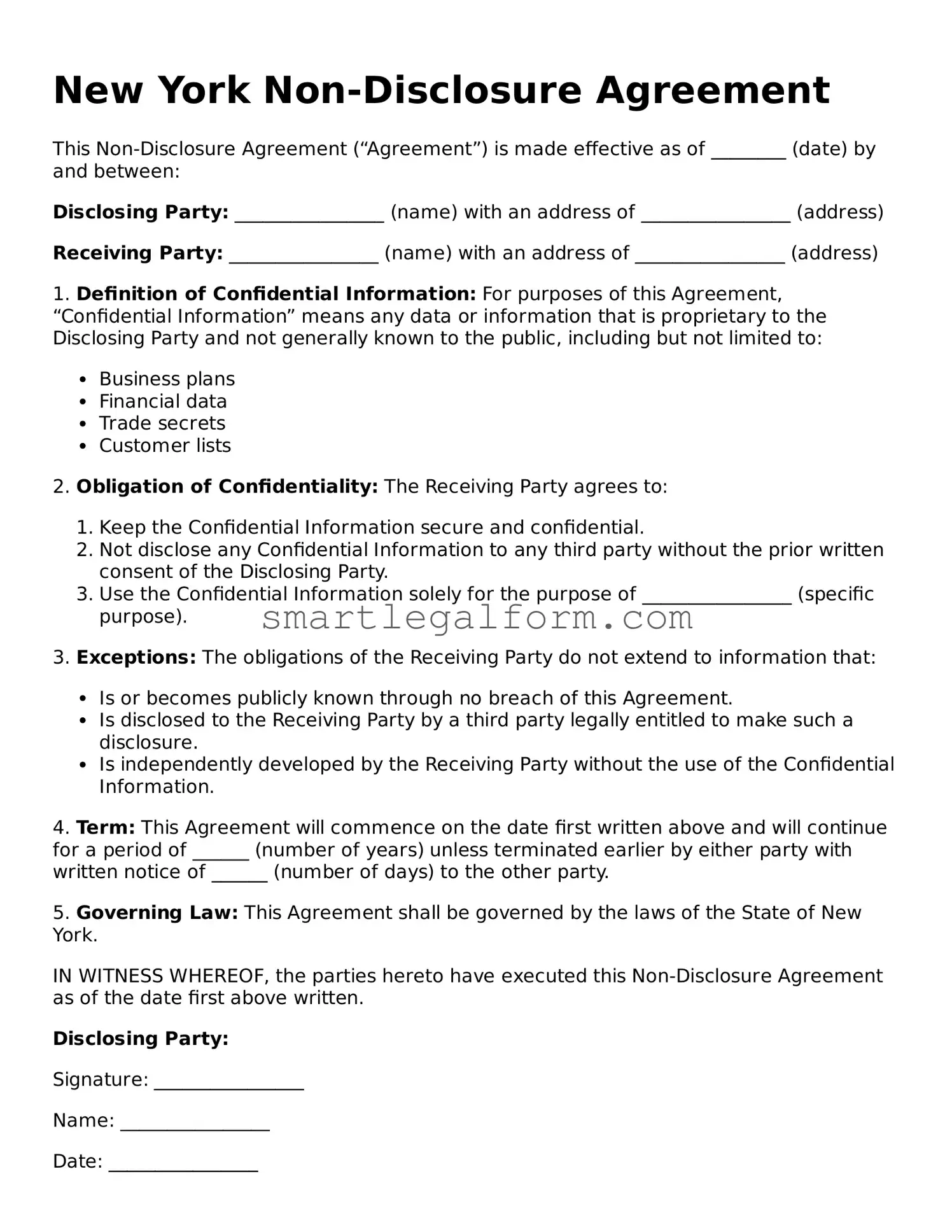New York Non-Disclosure Agreement
This Non-Disclosure Agreement (“Agreement”) is made effective as of ________ (date) by and between:
Disclosing Party: ________________ (name) with an address of ________________ (address)
Receiving Party: ________________ (name) with an address of ________________ (address)
1. Definition of Confidential Information: For purposes of this Agreement, “Confidential Information” means any data or information that is proprietary to the Disclosing Party and not generally known to the public, including but not limited to:
- Business plans
- Financial data
- Trade secrets
- Customer lists
2. Obligation of Confidentiality: The Receiving Party agrees to:
- Keep the Confidential Information secure and confidential.
- Not disclose any Confidential Information to any third party without the prior written consent of the Disclosing Party.
- Use the Confidential Information solely for the purpose of ________________ (specific purpose).
3. Exceptions: The obligations of the Receiving Party do not extend to information that:
- Is or becomes publicly known through no breach of this Agreement.
- Is disclosed to the Receiving Party by a third party legally entitled to make such a disclosure.
- Is independently developed by the Receiving Party without the use of the Confidential Information.
4. Term: This Agreement will commence on the date first written above and will continue for a period of ______ (number of years) unless terminated earlier by either party with written notice of ______ (number of days) to the other party.
5. Governing Law: This Agreement shall be governed by the laws of the State of New York.
IN WITNESS WHEREOF, the parties hereto have executed this Non-Disclosure Agreement as of the date first above written.
Disclosing Party:
Signature: ________________
Name: ________________
Date: ________________
Receiving Party:
Signature: ________________
Name: ________________
Date: ________________
